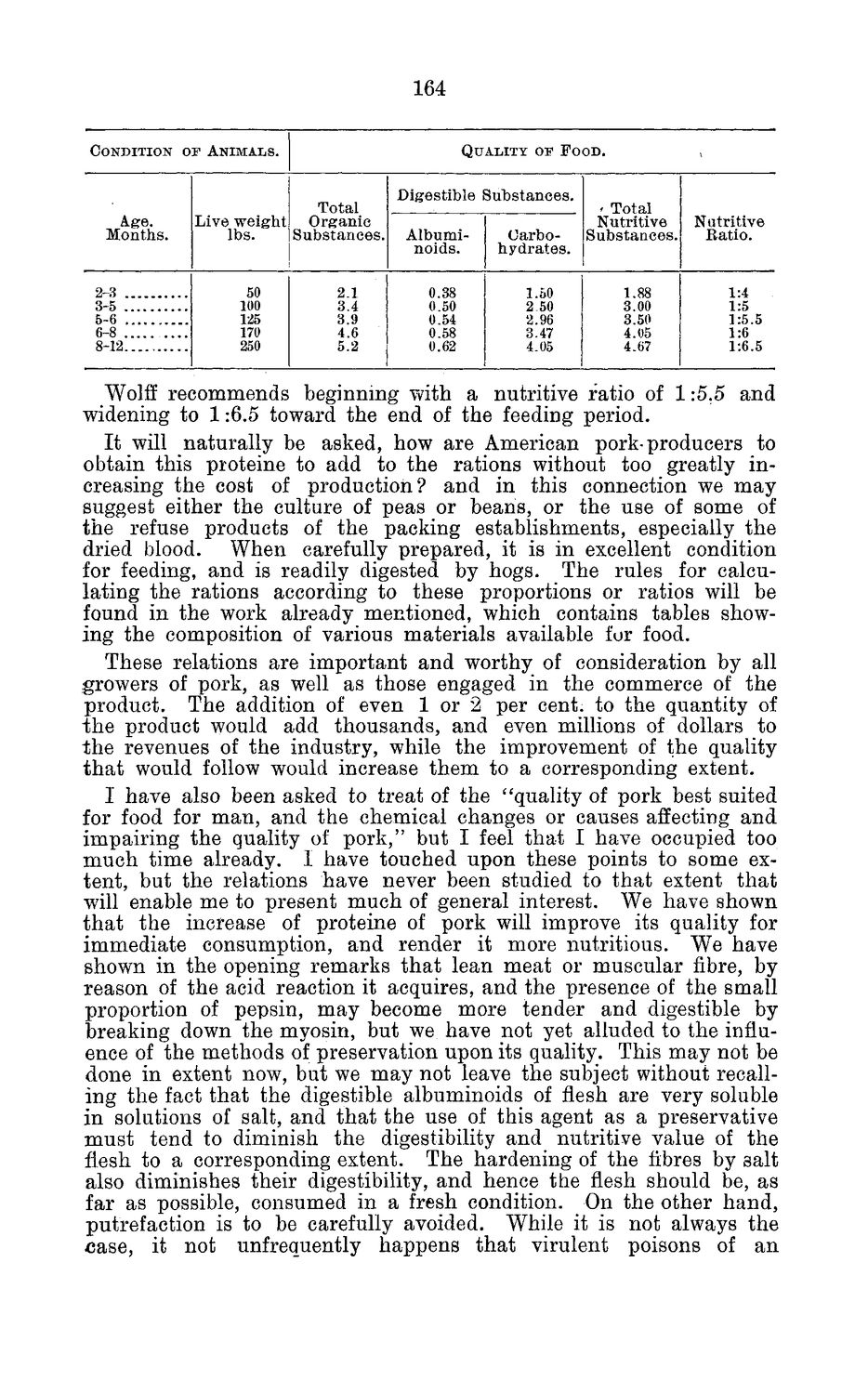| |
| |
Caption: Board of Trustees Minutes - 1884
This is a reduced-resolution page image for fast online browsing.

EXTRACTED TEXT FROM PAGE:
164 CONDITION OF ANIMALS. QUALITY OF FOOD. , Age. Months. Total Live w e i g h t O r g a n i c lbs. Substances. Digestible S u b s t a n c e s . Albuminoids. 0.38 0.50 0.54 0.58 0.62 Carbohydrates. 1.50 2 50 2.96 3.47 4.05 * Total Nutritive Substances. Nutritive Ratio. 2-3 3-5 5-6 6-8 8-12 50 100 125 170 250 2.1 3.4 3.9 4.6 5.2 1.88 3.00 3.50 4.05 4.67 1:4 1:5 1:5.5 1:6 1:6.5 Wolff recommends beginning with a nutritive ratio of 1:5.5 and widening to 1:6.5 toward the end of the feeding period. It will naturally be asked, how are American pork-producers to obtain this proteine to add to the rations without too greatly increasing the cost of production? and in this connection we may suggest either the culture of peas or beans, or the use of some of the refuse products of the packing establishments, especially the dried blood. When carefully prepared, it is in excellent condition for feeding, and is readily digested by hogs. The rules for calculating the rations according to these proportions or ratios will be found in the work already mentioned, which contains tables showing the composition of various materials available for food. These relations are important and worthy of consideration by all growers of pork, as well as those engaged in the commerce of the product. The addition of even 1 or 2 per cent, to the quantity of the product would add thousands, and even millions of dollars to the revenues of the industry, while the improvement of the quality that would follow would increase them to a corresponding extent. I have also been asked to treat of the "quality of pork best suited for food for man, and the chemical changes or causes affecting and impairing the quality of pork," but I feel that I have occupied too much time already. I have touched upon these points to some extent, but the relations have never been studied to that extent that will enable me to present much of general interest. We have shown that the increase of proteine of pork will improve its quality for immediate consumption, and render it more nutritious. We have shown in the opening remarks that lean meat or muscular fibre, by reason of the acid reaction it acquires, and the presence of the small proportion of pepsin, may become more tender and digestible by breaking down the myosin, but we have not yet alluded to the influence of the methods of preservation upon its quality. This may not be done in extent now, but we may not leave the subject without recalling the fact that the digestible albuminoids of flesh are very soluble in solutions of salt, and that the use of this agent as a preservative must tend to diminish the digestibility and nutritive value of the flesh to a corresponding extent. The hardening of the fibres by salt also diminishes their digestibility, and hence the flesh should be, as far as possible, consumed in a fresh condition. On the other hand, putrefaction is to be carefully avoided. While it is not always the <case, it not unfrequently happens that virulent poisons of an
| |